www.entitymodelling.org - entity modelling introduced from first principles - relational database design theory and practice - dependent type theory
Verb Phrases
We have examples of verb phrases in the right hand column of table 1. They are quite varied in their structure. Here is a typical analysis of a verb phrase, in this case for the predicate of figure 4:
Generally, a verb phrase contains a verb which is said to be the head of the phrase. In this example the verb is complemented by a direct object which is of type `noun phrase'. Note that we can be sure that the phrase `a new record' is of type `noun phrase' because we can construct a sentence with it as the subject. In fact it can replace any of the subjects in table 1 and new sentences result and, providing that verbs are conjugated appropriately, the results are well-formed though admittedly they are in some cases very unusual.
According to this analysis the phrase `set a new record' is a verb phrase constructed as a `verb' followed by a `noun phrase' and this is one general rule of a number of such for the construction of verb phrases. Formally expressed the rule is:
|
VP
V NP
|
(2) |
In an entity model we can represent this like this:
In other cases a verb phase consists just of a verb alone and has no constituent noun phrase. Only certain verbs that can be used in this way and these are said to be intransitive. Thus `he cries' is an example in which `he' is the subject and `cries' is a predicate verb phrase consisting solely of the verb. Formally:
|
VP
V
|
(3) |
The entity model equivalent is simply this:
These fragments can be combined like this:
Still other verb phrases have two objects a direct object of the action and an indirect object. Formally:
|
VP
V NP NP
|
(4) |
This leads to a model combining representations of rules (2), (3) and (4)like this:
It is worth saying at this point as an illustration of the choices that are open to an entity modeller in any modelling situation that sometimes the two rules above will be represented together as a single combined rule in which parentheses are used to indicate optionality of the noun phrase:
|
VP
V (NP)
|
(5) |
Likewise the entity modeller may dispense with the types representing the transitive and intransitive cases and represent the combined situation like this:
In total, Brinton describes seven different constructions for verb phrase. These constructions are both summarised and illustrated in table 3. Alternatively the rules summarised in table 3 can be expressed by combining all the different rules into the entity model of a verb phrase shown in figure 6 in which types `noun phrase', and `prepositional phrase' are yet to be described but `adjectival phrase' was described earlier in section Adjectival Phrases.
| Type of verb phrase/Rule | Example |
|---|---|
|
mono transitive
VP
V NP
|
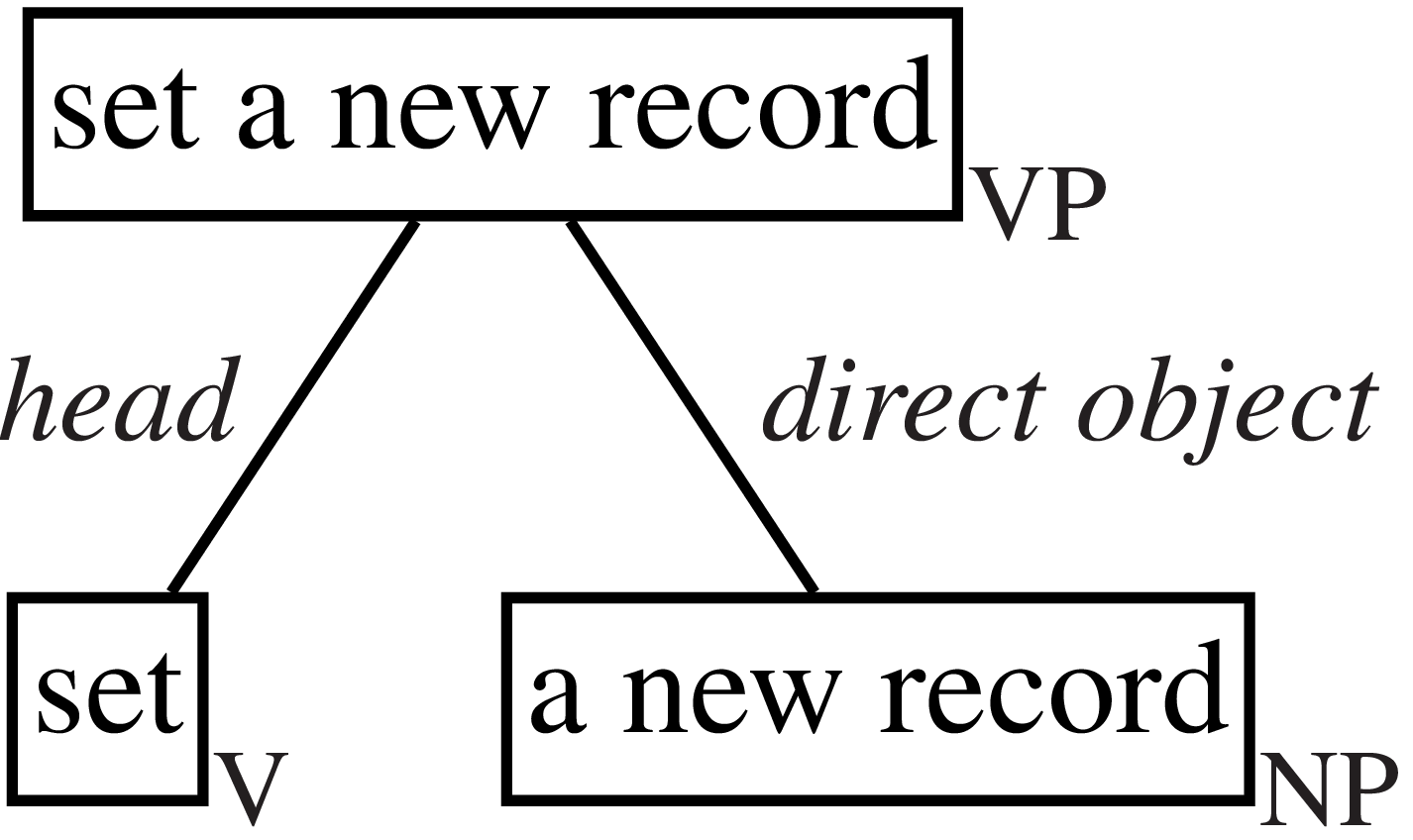
|
|
intransitive
VP
V
|
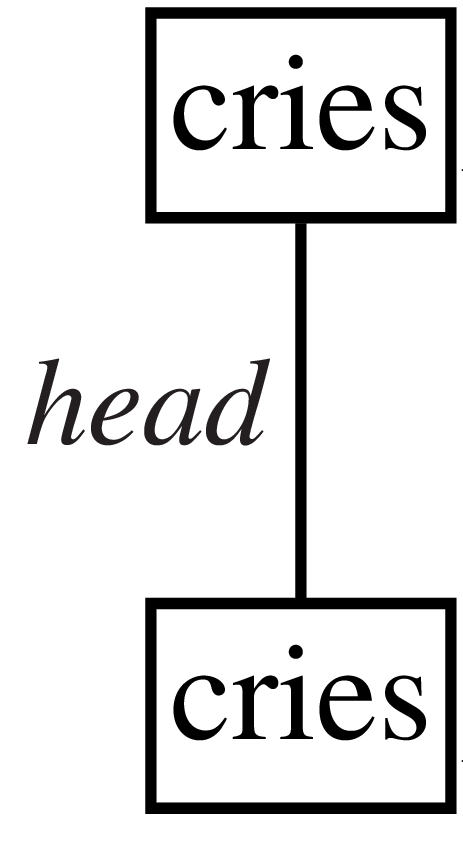
|
|
ditransitive
VP
V NP NP
|
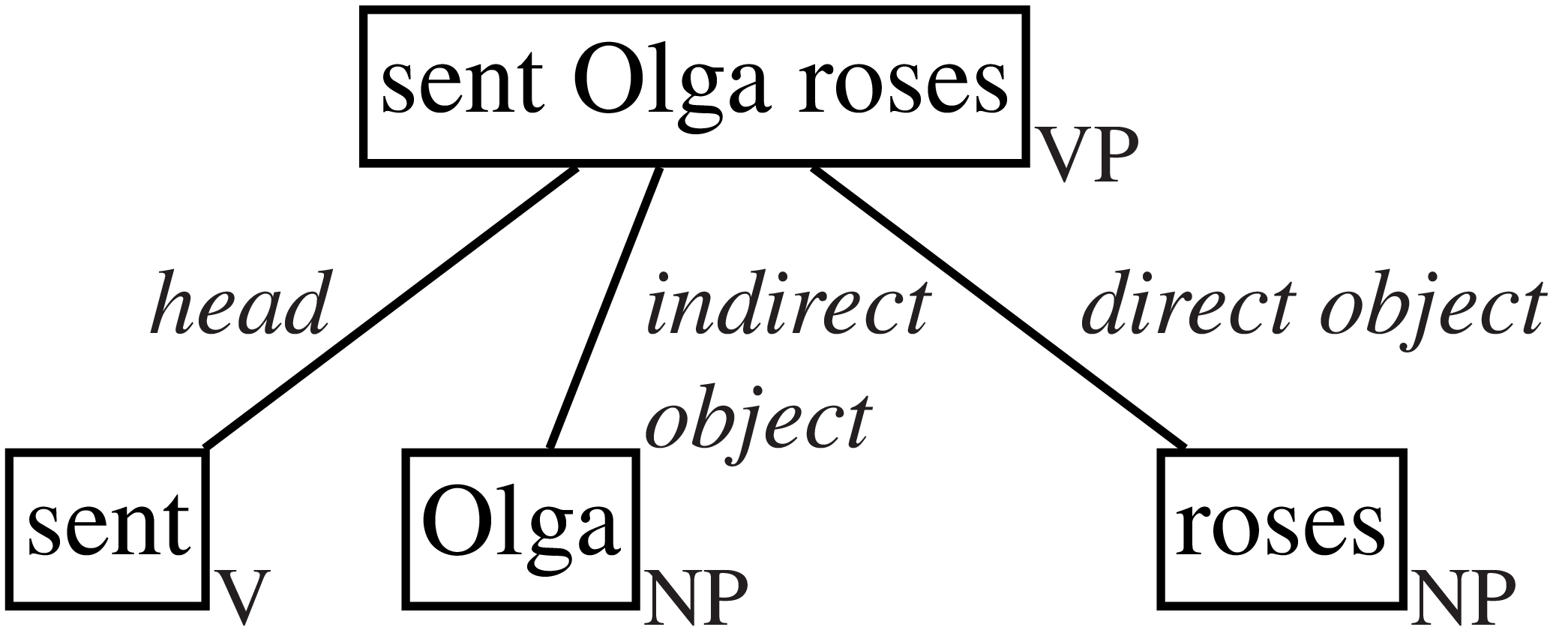
|
|
copulative
VP
V {NP, AP, PP}
|
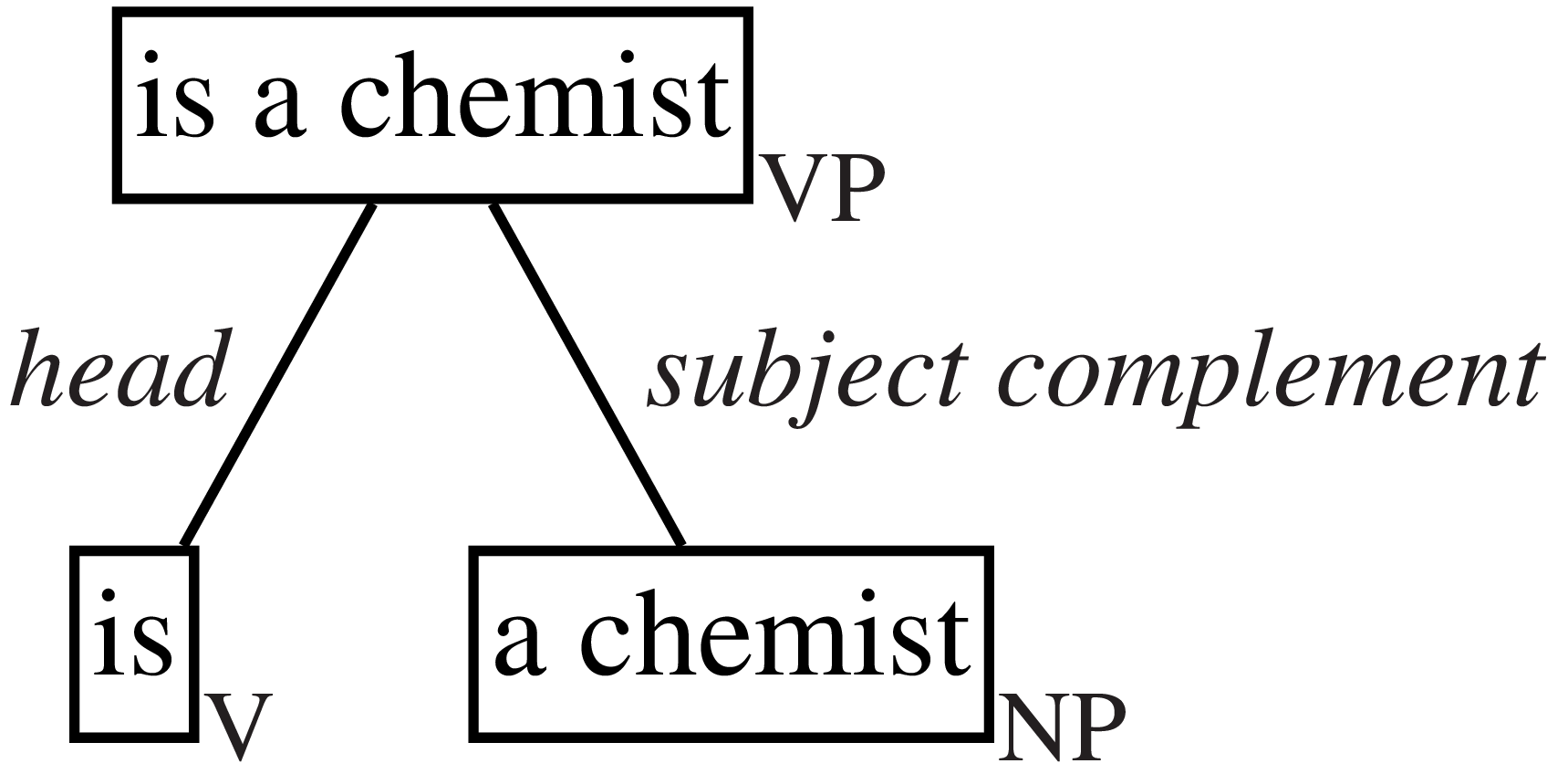
|
|
complex transitive
VP
V NP {NP, AP, PP}
|

|
|
mono prepositional
VP
V PP
|
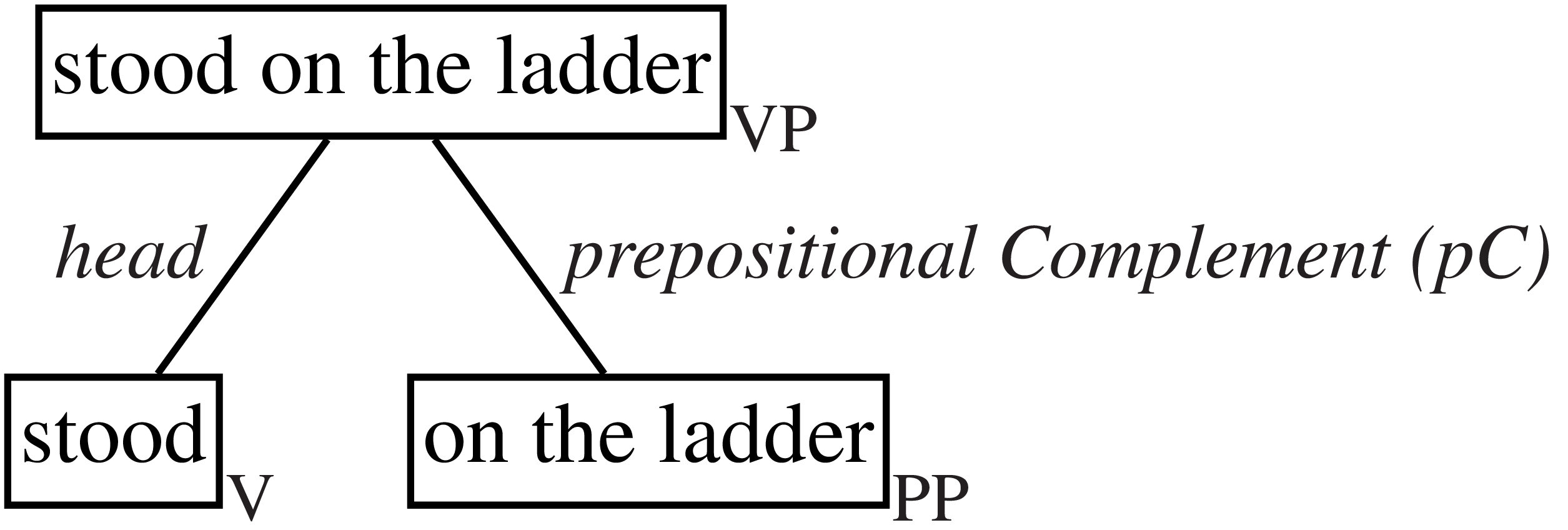
|
|
diprepositional
VP
V PP PP
|
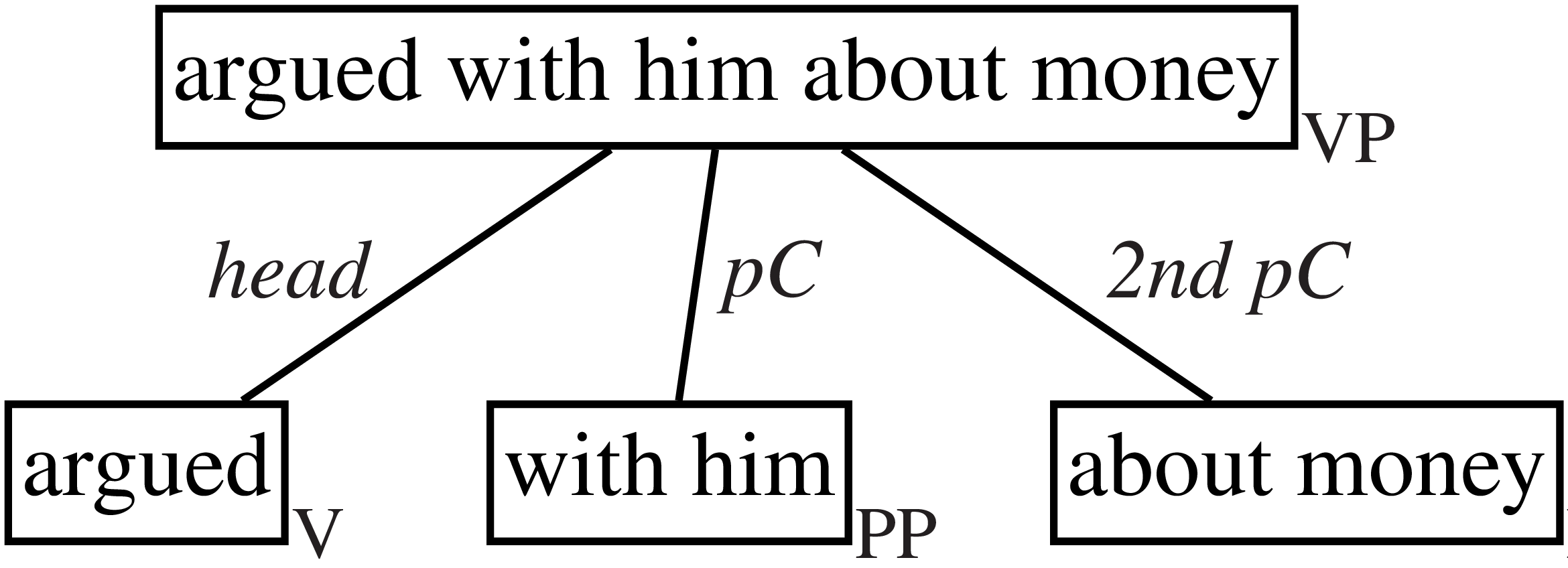
|